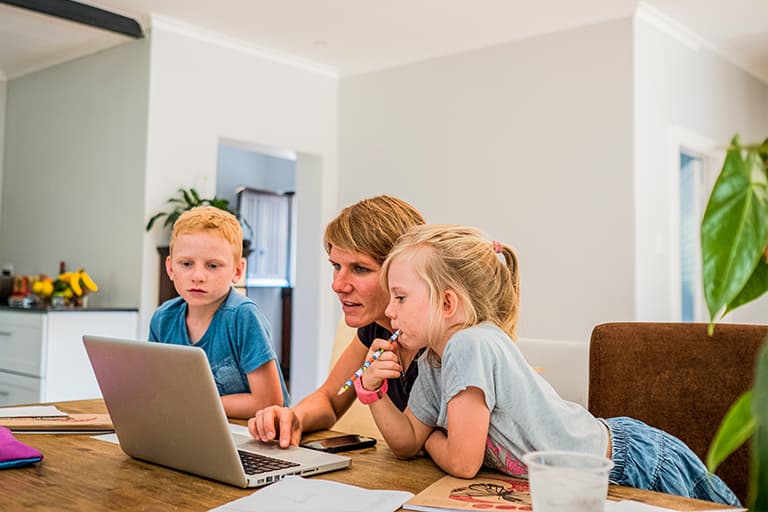So much of our public discourse is understandably devoted to the health and economic impacts of Covid-19, however for many families, the biggest day to day transformation has been home learning.
Anxiety among parents has risen as they struggle to support daily learning requirements, often for multiple children. This includes organising things like content, login details, devices, meeting times and submission requirements, as well as actual teaching for younger students.
According to our national study, which surveyed 608 parents of primary-aged children in April and May 2020, a whopping 85 per cent of parents spend at least a couple of hours each day supporting their child’s home learning. Of that figure, 30 per cent of parents are dedicating their “whole day” to their child’s remote learning.
What’s more, when it comes to teaching basic literacy and numeracy skills, more than one in five parents admit they don’t feel equipped to provide the necessary support.
“Parents are clearly developing new insight into what their children are doing at school and how their children learn,” says Cluey Chief Learning Officer, Dr Selina Samuels. “An unexpected benefit to this situation may well be a greater partnership between parents and teachers.”
Live learning vs. worksheets
A large majority of respondents indicated that the mode of learning delivery for their children has not been in real time, leaving the burden of live interaction and feedback to parents.
Our national survey revealed that Australian primary children are largely being educated via asynchronous learning methods versus live teaching. Almost seventy per cent of parents say their child’s teacher is delivering learning via:
- Worksheets – 44 per cent (asynchronous)
- Pre-recorded classes/tutorials – 25 per cent (asynchronous)
- Live classroom sessions – 24 per cent
- No materials or classes provided – 6 per cent
Dr Samuels argues that technology can and should bolster real-time interactions between students and teachers — a trend which only some children have been lucky enough to experience during this period of isolation.
“When we initially developed our approach to teaching and learning at Cluey, we put the real time human connection between student and teacher at our core,” she says. “We know that it is of paramount importance for all students to have at least some direct interaction with an educator, and to receive the personalised input and feedback that really fuels learning.”
Parents are ready to send their kids back to school
Many parents are ready to pass the baton back to teachers, with 46 per cent admitting they are “excited/happy” about schools re-opening, while 15 per cent are “anxious/nervous” and 39 per cent have mixed feelings.
Almost one in three will not send their child back to school when they re-open or they are unsure if they will.
Keep visiting our Cluey blog for more insights from our latest research. We look forward to presenting further parent results, as well as the findings from our senior students.
